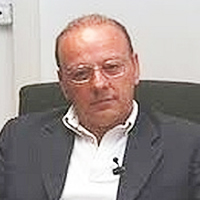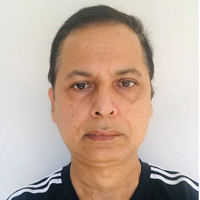Mesh-reinforced Anterior Component Separation for Repair of Large Ventral Hernia: Ten-year Experience in Multiple Centers
Published on: 12th August, 2025
Background: Repair of a large ventral hernia is a challenge for surgeons. Component Separation Technique (CST) is a novel technique for closure of the midline with live tissues without undue tension. This can further be reinforced by a prosthesis. We wanted to see the outcome of mesh-reinforced open Anterior Component Separation (ACS) for large complex ventral hernia repair. We aimed to see the duration of surgery, hospital stay, Surgical Site Occurrence (SSO), and recurrence within the first year after surgery.Materials and methods: We analyzed data of patients operated from January 2014 to January 2024 for a period of 10 years in three centers. There were 13 patients with divarication of recti without any previous surgery. Rest 44 patients had either incisional hernia or port site hernia. All patients had defect sizes more than 8 cm. Open bilateral anterior component separations were done to achieve midline closure. Medium-pore soft Prolene mesh was used to reinforce the midline closure by an on-lay technique. Patients were followed up to 1 year after surgery to assess efficacy and complications of the procedure.Results: The average operating time was 73 ± 12 min. Hospital stay was 3 to 7 days, mean was 5.3 days. Surgical site occurrence was 14%. These include seroma formation, major wound infection, and abscess formation. There was no flap necrosis nor mesh removal. There was no recurrence within one year of follow-up after surgery. Conclusion: Open mesh Anterior Component Separation (mACS) is an easy and effective way of treating large and complex ventral hernia. Operating time is substantially less than posterior component separation. Reinforcement with mesh reduces recurrence.
An Interesting Autopsy Case Report of Acute Respiratory Failure
Published on: 11th October, 2023
Vasculitis is a group of rare but potentially serious disorders characterized by inflammation of blood vessels. This condition can affect blood vessels of all sizes, ranging from small capillaries to larger arteries.
Texture Analysis of Hard Tissue Changes after Sinus Lift Surgery with Allograft and Xenograft
Published on: 29th April, 2024
In the realm of dental surgery, implants are essential for replacing missing teeth. To facilitate implant placement, techniques such as bone grafting and sinus lifts are utilized to augment the volume of atrophied alveolar bone in candidates for dental implants. Typically, patients undergo a period of recovery following bone grafts before proceeding with implant placement. This study investigates the efficacy of Cone Beam Computed Tomography (CBCT) in measuring the residual bone volume and assessing bone quality after the healing phase. A texture analysis was conducted on CBCT scans from 42 patients requiring maxillary sinus lift reconstruction. These patients were categorized into two groups based on the type of grafting material used: Xenograft or allograft. The study analyzed the distribution of various texture parameters and conducted a Mann-Whitney U test to identify significant statistical differences between the groups. Results indicated non-normal distributions for specific variables such as Area_S(1,0) and S(1,0)SumOfSqs, while others like S(1,0)Entropy displayed normal distributions. The findings revealed no significant statistical differences in the primary outcomes between the xenograft and allograft groups. However, the average values of the gray shades of pixels in the allograft group were statistically significantly higher compared to the xenograft group, suggesting differences in bone texture post-procedure.
Bouveret Syndrome in an Elderly Female
Published on: 3rd January, 2017
OCLC Number/Unique Identifier: 7317627575
Introduction: A gastric outlet obstruction secondary to a gallstone ileus is known as Bouveret syndrome. Herein we present a case of an elderly woman with an impacted gallstone in duodenum and discuss its’ management.
Patient description: A 96-year-old woman was admitted to our department due to a gastric outlet obstruction. Initial gastroscopy revealed a gastric bezoar. An attempt for its extraction failed. She underwent a laparotomy in which a cholecystoduodenal fistula and a large impacted stone were found. Separation of the fistula, including closure of the duodenum side, cholecystectomy and removal of the obstructing gallstone were performed. Additional stones were found and retrieved during common bile duct (CBD) exploration. Surgery was finalized by duodenoplasty, closure and T-tube drainage of the CBD. Post-operative course was prolonged and uneventful.
Discussion and Conclusions: Bouveret syndrome is a rare cause of gastric outlet obstructions. In this case, unsuccessful endoscopic treatment necessitated surgery for removal of impacted gallstone in the duodenum.
Hepatic adenomatosis: A clinically challenging rare liver disease
Published on: 11th July, 2018
OCLC Number/Unique Identifier: 7828397085
43-year-old lady presented with incidentally discovered liver lesions while she was being managed for her complaints of menorrhagia. CT and MRI showed hepatomegaly with multiple lesions in both lobes of the liver with vascular element in the background of diffuse fatty infiltration. Patient underwent laparoscopic core biopsy. Histopathology showed extensive steatosis, intracytoplasmic giant mitochondria and absence of portal tracts, features highly suggestive of hepatic adenomatosis. IHC staining showed membranous and cytoplasmic positivity in hepatocytes for B-catenin consistent with multiple hepatic adenomatosis. Hepatic adenomatosis is a new clinical entity in the hepatological practice characterized by the presence of 10 or more nodules in the liver known for its major complication of bleeding. Hepatic adenomatosis is managed by regular imaging and resection of large (> 5cm) superficial and painful adenomas along with liver function tests and tumor markers to rule out malignant transformation. However, the potential cure being the liver transplantation.
Intestinal obstruction complicated by large Morgagni hernia
Published on: 27th March, 2017
OCLC Number/Unique Identifier: 7317596428
Morgagni hernia represents 2-4% of congenital diaphragmatic hernias. Only one-third of them are symptomatic, due to the hernia of abdominal viscera in the thoracic cavity, causing respiratory and digestive problems, some of them serious ones, such as intestinal obstruction. Acute presentation with incarceration of the contents is rare; there are only 7 cases described in the literature.
We are presenting a case of diaphragmatic hernia that began with obstruction of the colon and secondary ischemia, requiring emergency surgery in two phases: first surgery to control the damage, with an open right hemicolectomy, and then later surgery to repair the hernia and perform bowel transit reconstruction, with proper postoperative evolution and no evidence of relapse.
The treatment of Morgagni diaphragmatic hernia is surgical. Also in asymptomatic cases, due to the risk of incarceration, the most appropriate way to enter is abdominally, whether by way of laparotomy or laparoscopy, for the reduction of the contents of the hernia sac, the repair of the defect, as well as the performing of associated techniques on herniated viscera, as occurred in our case.
A complicated congenital hernia is an infrequent pathology, and there is little experience in handling it. Acute presentation requires a combined treatment of the abdominal symptoms and repair of the hernia defect. The carrying over of surgical techniques for damage control into non-traumatic surgery in the face of serious hemodynamic instability is a widespread, accepted practice with the benefits of reducing mortality in critical patients and at times allowing the avoidance of ostomies.
Clinical significance of Urinary Amylase in Acute Pancreatitis
Published on: 27th June, 2017
OCLC Number/Unique Identifier: 7317596310
Acute pancreatitis forms a major bulk of our inpatient admission due to gall stone disease. Diagnosis of acute pancreatitis remains a challenge even now. Serum amylase remains the most commonly used biochemical marker for its diagnosis but its sensitivity can be reduced by late presentation, hyper-triglyceridemia and chronic alcoholism. We conducted a study to determine the levels of serum and urinary amylase in patients with acute pancreatitis and compared their sensitivity and correlation with CT findings vis-à-vis the severity of the disease. The study was taken as a post graduate research model in the Post graduate Department of General and Minimal Access Surgery, Govt. Medical College Srinagar, J&K, India 2014-2016 and submitted for the award of masters in General Surgery. A total number of 150 patients were enrolled in the studies which were admitted in our unit as acute pancreatitis. 73 (48.7%) belonged to the age group of 30-44 years, 15(10%) patients aged >60 years with 86 (57.3%) males and 64 (42.7%) females. We had 81 (54%) patients with biliary tract diseases, followed by 21 (14%) patients with worm induced, 20 (13.3%) had hyperlipidaemia and only 4 (2.7%) patients had post ERCP etiology. Tenderness in epigastrium was the presenting sign in 111 (74%), followed by chest signs in 25 (16.7%) patients, diffuse tenderness in 19 (12.7%), icterus in 11 (7.3%), low grade fever in 9 (6%) patients, shock in 5 (3.3%). Diabetes mellitus as a comorbidity was observed in 48 (32%) patients followed by hypothyroidism 37 (24.7%) patients. Hypertension was seen in 31 (20.7%) patients, COPD in 19 (12.7%) patients and obesity in 13 (8.7%) patients. Twenty two (14.7%) needed ICU admission; while as 128 (85.3%) were managed in the general ward. All the enrolled patients in our study were managed conservatively. Out of a total of 150 patients, 148 (98.7%) survived while as only 2 (1.3%) of our patients expired. At the time of admission in the hospital, 120 (80%) patients had serum amylase level of >450 U/L, 19 (12.7%) patients had 150-450 U/L levels while as 11 (7.3%) patients had <150 U/L serum amylase levels. CT has been shown to yield an early overall detection rate of 90% with close to 100% sensitivity after 4 days for pancreatic gland necrosis. The correlation of urinary amylase with the CECT Severity Scoring in a patient of acute pancreatitis is still ambiguous.
Surgery and new Pharmacological strategy in some atherosclerotic chronic and acute conditions
Published on: 18th August, 2017
OCLC Number/Unique Identifier: 7317601909
Introduction
In actual pharmacological therapy we can see that some drugs can be added to other medical instruments to improve their activity: in example we can see medicated stent for some coronary disease, or hormonal medical devices used in pregnancy prevention, but other example are known today. In example Carmustine wafer is delivered by delivery systems in some brain cancer and radioactive seed implants in prostatic cancer. Ocular intra vitreal implants for some macular degenerations (MABS or cortisones) other implants delivery systems drugs, naltrexone implant for opiate dependence. Other strategies imply carrier use to deliver the drugs in the site of action: In example MABS linked to radioactive isotopes in some relapse of severe Hodgkin disease but many other example we can see in therapy used today. So we can think that other chronic conditions can be treated using a combination of drugs with other instrument to improve the clinical outcomes. This to make possible that the ERLICH MUGIC BULLETS can act in the right site reducing the side effect. In example today we can see various medical interventional radiological strategy to treat in coronary and hearth disease with medicate stents positioning or to local use of contrast agents or other valvle surgery procedures with global good clinical results.
From Adversity to Agency: Storytelling as a Tool for Building Children’s Resilience
Published on: 11th November, 2024
Children who experience Adverse Childhood Experiences (ACEs)—including trauma, family instability, or significant loss—are at increased risk for enduring mental, emotional, and physical challenges, including conditions such as depression, anxiety, and chronic health issues. Without effective support, these adverse experiences can have lasting effects on a child’s well-being, often persisting into adulthood and impacting mental, emotional, and physical health outcomes over the long term. Storytelling is a powerful method to support resilience in these children by enabling them to process emotions, make sense of complex experiences, and view themselves as active agents in their lives. By framing their experiences within personal narratives, children can create coherent stories that aid emotional regulation and support mental well-being. Through storytelling, children can frame their struggles as part of a larger, purposeful journey, fostering a sense of agency and self-worth. Techniques such as narrative therapy, story circles, and resilience-themed books-exemplified by The Adventures of Gabriel—help children explore their experiences, visualise positive outcomes, and strengthen social bonds. Moreover, storytelling is an accessible tool that aids in perspective—taking, allowing children to relate their challenges to those of characters, which reinforces their ability to overcome adversity and navigate life’s complexities with strength and optimism.
Comments for the Nuremberg Code 70 Years Later
Published on: 20th October, 2017
OCLC Number/Unique Identifier: 7317654647
The story of Nuremberg code in human experiments was evolved by a 70-year old historical link, aiming to provide an alert message for scientists in case of non-provisional disaster caused by immoral human experiment. It played a safeguard role standing on the front line [1].
We really can see something what authors feared in this article. We fully agree with the authors about the general concepts, but we feel something is missing on current problems: the illegal abuse of medical materials and the underground human experiments. What we should do is to enrich its new implications of Nuremberg code and then put it embedded in human brain.




